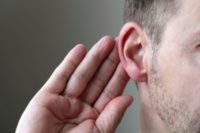Why is business pursuing ethanol with such irrational exuberance? There is one word to explain how government can exert this kind of immense control over industry: subsidies.
What do subsidies have to do with environment health and safety? Unfortunately, nothing right now, but in my opinion they should play a much larger role. Without billions of dollars for corn and ethanol tax subsidies, the ethanol fuel industry would quickly cease to exist. This shows that the government has, through the power of subsidies, enormous power to warp both return on investment calculations and warp risk management decisions.
Sharing the bounty
If government subsidies can get businesses to do irrational things like produce fuel ethanol from corn, just think of what government subsidies could do to encourage rational, moral behavior, like preventing workplace injuries and illnesses. This seems to be a particularly interesting concept in a global industrial world where federal OSHA standards are increasingly irrelevant.
What about subsidies, tax breaks, and bottom-line incentives for superior safety performance? OSHA requirements stop at the border but money travels the globe. How much should the government be willing to pay to improve corporate safety performance? A billion? Ten billion? That may seem like a lot when compared to the OSHA budget, for example, but a drop in the bucket for things like corn and sugar subsidies, oil production subsidies, and all the other corporate goodies that the government has showered on businesses for decades.
Why shouldn’t safety and health share in, or at least ask for, some of the subsidy bounty?
Bribery? Get over it…
I have been involved with, and fully supported from the very beginning many monetized safety and health analyses like ORC Worldwide’s Return on Safety and Health Investment. I spent many years trying to wring a little return on safety investment out of needed programs, attempting to convince management to pony up a few dollars. Sometimes safety “pays” in a strict financial sense, but sometimes it doesn’t. Government subsidies or tax credits would skew the return on investment calculations to ensure that safety spending is “an offer too good to be refused.”
Maybe some are appalled at contemplating “bribing” companies for doing what they “should be doing.” Get over it. Governments all over the world toss huge subsidies at companies for doing all the same things they already do.
For example, how much money does the federal government give to highly profitable oil companies so they can drill for oil? And while giving gift cards and belt buckles to employees is a widely used and accepted practice, giving tax incentives to the companies for essentially the same thing never seems to be discussed. There have got to be creative ways to include subsidies, tax rebates and tax credits to make safety and health investment a big contributor to the bottom line.
Tax breaks for setting PELs
As an example, most will agree that our Permissible Exposure Limit system is broken, and there are no fixes on the horizon. Perhaps we could apply safety subsidies.
Typically, industry seeks to quash new PELs that they think will “cost them money” for more stringent exposure control. Think of all the “cost-benefit” hand-wringing any time a PEL is even proposed to be looked it. Now think of the effort a company just might make to do the industrial hygiene and toxicology science research and push a new PEL through the system if, when it is OSHA-approved, the company gets, say, a $20-million tax break over a few years. If there is a tax “prize” for the company that champions a new PEL, that terrible “cost-benefit” equation suddenly looks a lot different. It would be encouraging to see a world where companies are pushing OSHA to quickly approve the PELs they propose and even globally competing to push various PELs through first to win the “prize.” Companies might even spring up to just produce PELs and then sell the tax breaks. What is a fresh PEL really worth?
We live in a world where it seems everything but safety is subsidized. What a tool it would be for safety pros to be able to make a real business case with real money on the table for safety. With well-designed subsidies, return on safety and health investment could really mean something big.

